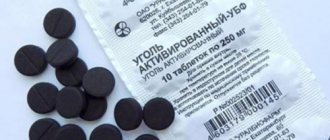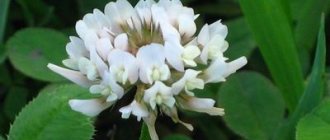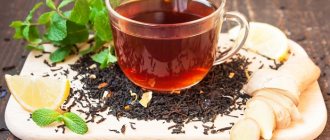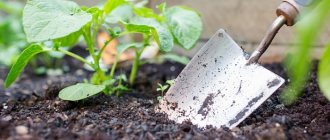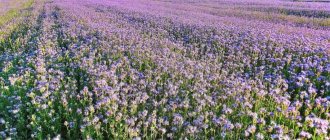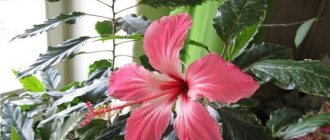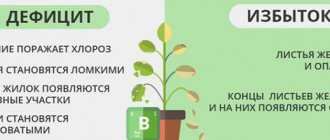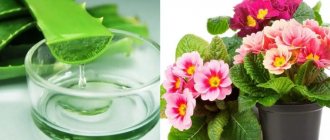Some gardeners and gardeners face the following problem. That when horse manure is added to the soil, it is observed that it is not as beneficial for plants as it is described on most forums and websites. The thing is that horse manure is not useful for all plants. In addition, the technique of applying fresh manure and humus from it also has a number of differences. So let's start in order. When applied to the soil, horse manure works almost immediately. But in the first year of application there will be no noticeable increase in yield. Since there is practically no mineral nitrogen in horse manure. But in subsequent years the harvests will please you. The organic matter contained in horse manure will decompose and increase soil fertility.
Horse droppings are very beneficial for all squash plants. Zucchini, cucumbers and pumpkin grow in soil fertilized with horse droppings by leaps and bounds. Because it makes the soil warm to almost the entire depth of the root layer of these plants. And as we all know, the root system of these plants is superficial.
For which plants is horse manure harmful?
It’s worth noting right away which crops you can’t apply horse manure to. These are: carrots, beets, radishes, radishes, turnips, horseradish, celery and parsley; manure cannot be added either in the fall or in the spring. Although they can be grown in areas where manure was applied to the crops preceding them. You cannot add manure when growing aster; this leads to Fusarium wilt.
And how can applying horse manure be beneficial? These are zucchini, cucumbers and cabbage. And also planting peonies, roses, lilacs, clematis and dahlias will thank you with generous flowering for adding manure.
Chemical composition of horse manure. Horse manure contains up to 71.3% water and 25.4% organic matter. Nitrogen contains 0.59% of which 0.09% is ammonia nitrogen. Phosphorus is 0.26% and potassium is 0.59%. Calcium 0.21%. Acidity is 7.9 pH. And the ratio of nitrogen to carbon is 21, this is the ideal ratio for rapid decomposition.
Horse manure contains trace elements such as magnesium in an amount of 0.14% by weight of the manure. For example, 100 kilograms of manure contains 1.4 grams or 1400 milligrams. In addition, boron is present in the amount of 140 milligrams, cobalt 7 milligrams, copper 110 milligrams, zinc 670 milligrams and molybdenum 15 milligrams.
The data are averaged and can change by a factor of 2, both up and down. The content of microelements in manure depends on what kind of food the animal ate.
Horse droppings are used both for plant nutrition and as biofuel. It is recommended to apply it fresh to the soil only in the fall. In spring, it can only be used in the form of liquid fertilizers.
This type of organic fertilizer begins to decompose at a temperature of about 80 degrees, and the decay processes occur much faster than other types of manure. And in the end, this fertilizer ends up with the loosest structure.
Article on the topic : When is it better to apply horse manure in spring or autumn?
Therefore, horse manure, like sheep manure, should primarily be used as a fertilizer on cold, dense, clayey soils. To improve their structure and enrich them with organic matter.
Beneficial features
Along with other types of organic fertilizers, horse manure is beyond competition. If we take the solid secretions of other animals for comparison, then horse secretions have the lowest level of moisture content. Due to its loose consistency, such soil decomposes faster, increasing the soil temperature in the shortest possible time. At the same time, due to the low content of acids in this fertilizer, it is not considered “aggressive”. Therefore, its use has a beneficial effect both on the soil itself and on the plants growing in it. This applies not only to the crops we are used to (potatoes, tomatoes, carrots), but also to flowers (in particular, roses).
Other beneficial properties include:
- stimulating the activity of microorganisms in the soil;
- improvement of soil composition;
- an increase in carbon dioxide content;
- ensuring optimal processes (air, heat, water);
- helps make heavy soil looser;
- does not promote acidification.
How to use horse manure to feed cucumbers, zucchini and pumpkins.
In terms of the content of useful substances, horse manure is much richer than cow manure. It can be used to quickly warm up cold and heavy soils. As you know, cucumber is a heat-loving crop. And it responds very well to the addition of horse manure to the soil. Especially if you do it in the form of warm beds.
Article on the topic: How to use horse manure to make a warm bed.
Fertilizers of cucumbers, zucchini and pumpkins are carried out even before the vegetables begin to bloom. To do this, 1 liter of manure is diluted in 10 liters of water. If the litter is fresh. Then it will need to be left for a few more days. If you are diluting humus, there is no need to infuse it.
You can add 10 grams of nitrophoska to the resulting slurry. We feed all pumpkin plants with this infusion at the rate of 1 liter for each bush.
When sowing pumpkins, you can put several handfuls of rotted droppings in each hole. Sprinkle it with a small amount of soil on top. Next, put the seed and cover everything with soil.
Many gardeners have noticed that if a container with fermented horse manure is placed in a greenhouse where cucumbers are grown, their growth will noticeably accelerate.
Usage
Used for growing garden crops and vegetables in open ground and in greenhouse conditions. Excellent biofuel (heats the soil from the inside) when cultivating champignons, melons, and for filling insulated beds.
Directions for use:
- The soil is fertilized with fresh soil during autumn digging (5 kg/sq. m), warm beds of greenhouses are heated:
- remove a layer of earth to a depth of 30 cm;
- lay a layer of manure;
- pour over a weak hot solution of manganese water (for disinfection);
- mix the excavated soil with ash, lay it on top of the biofuel, level it (the top layer of soil must be at least 20 cm);
- cover with polyethylene film and leave for 48 hours;
- after 2 days, you can sow the seeds for seedlings.
- Liquid solutions are used to fertilize garden, fruit, and vegetable crops.
- Fresh horse waste (no older than 5 months) is used to insulate heat-loving plants for the winter so that the root system does not freeze. This is especially useful for roses: mix manure with soil and spud it around the crop, then prepare the flower for winter in the usual way.
- Prepare the ground in the fall for planting:
- cucumbers;
- cabbage;
- zucchini;
- pumpkins;
- squash;
- potatoes.
Where melons are planted in cold climates, horse manure warms the soil. Each type of manure is fertilized according to its characteristics.
How to fertilize tomatoes with horse manure.
To feed tomatoes with horse droppings, mix one bucket of the freshest horse droppings in 30 liters of water. Next, leave the resulting solution in a warm place until fermentation is complete. As a rule, fermentation stops already on the 10th day.
A 10-liter bucket holds 7 kilograms of unlined horse manure.
After this, it can be used to water the crop at the root. Fertilizing should be used no earlier than 14 days after planting the seedlings, when they have already taken root in the garden bed.
This feeding should be done with caution. Since tomatoes do not like rich soils. Oversaturation of tomato beds with fertilizers will lead to the fact that only the tops will grow well, and the fruits themselves will remain small and there will be very few of them.
In addition, it is not recommended to apply fresh manure to tomatoes, since it contains a lot of nitrogen. An excess of which will lead to increased growth of the vegetative mass and a decrease in the number of flowers.
Manure goes well with peat, sawdust, leaves, straw, and grass. Compost with peat is considered the best. But manure and straw remain an affordable option.
It turns out that the best option for fertilizing tomatoes with horse manure is one-year-old compost made from horse manure, green grass and straw crumbs. It rots quite quickly due to the high nitrogen content in green grass and straw crumbs, which take on a large share of the nitrogen for the decomposition of carbon.
If this compost substrate is spilled with the preparation Trichoderma Veride 471. This will speed up the composting process and additionally destroy harmful microflora.
Article on the topic: Trichoderma is a useful mushroom for protecting plants from diseases.
Horse manure can be applied before digging a plot in the autumn not only for cucumbers, but also for potatoes, zucchini and pumpkin. This type of fertilizer is applied at the rate of 5-6 kilograms per square meter. Manure does not need to be worked deep into the soil. Because it requires oxygen to be processed by soil microorganisms into humus. Therefore, the optimal depth for incorporating manure into the soil is 15-20 cm.
Horse manure is also suitable for preparing liquid fertilizers in a ratio of 1 to 10. That is, pour 10 liters of water per 1 kg of manure. And we insist for 3 days. To feed plants, dilute the resulting infusion with water in the ratio of 1 liter of infusion to 2 liters of water.
This infusion can be used to feed not only tomatoes and cucumbers. But also all plants with the exception of those plants whose names are placed at the beginning of the article. For them, manure feeding is undesirable in any form, not dry or liquid.
Instructions for use of Orgavit horse fertilizer
Brief instructions for use are printed on the pack of Orgavit horse fertilizer. It’s easy to prepare a nutrient solution for feeding indoor flowers, seedlings, and vegetable crops growing in a garden or greenhouse.
You need plastic containers that do not oxidize and water. For 10 liters of liquid - 100 g of granules, for 200 liters - 2 kg, for 1 liter - 10 g. It is easy to maintain this proportion. No scales needed. 1 tsp contains 6 g of product, 1 tbsp. l - 15 g. The suspension is first infused for 24-48 hours, then used for root feeding of plants.
Orgavit horse for indoor flowers
Indoor flower growers are happy to purchase organic fertilizer; the not entirely pleasant smell of the granules does not scare them. The soil in pots does not smell after watering with Orgavit solution.
| Type of feeding | Proportions | Application in indoor floriculture |
| liquid | 1 liter of water, 10 g of granules, leave for 12 hours | in spring, summer once every two weeks, consumption per pot of 1 liter - 0.5 liter |
| dry | when planting (transplanting) indoor plants 3-4 g per 1 kg of substrate | granules are placed on the bottom on top of the drainage so that they do not burn the roots |
In the garden for annual and perennial flower crops, Orgavit is applied when preparing the flower bed for planting - 200-300 g/m². Flowers receive balanced organic nutrition for 1-2 years.
Organavit for strawberries
Throughout the season, the crop consumes nitrogen, phosphorus, and potassium, removing them from the soil. When preparing the bed for planting, mineral fertilizers are applied to the soil; manure is not used, as it can burn the roots of the seedlings.
In Siberia and the Central regions of Russia, strawberries are fed with Orgavit infusion 2 times per season. It is prepared using standard technology. 100 g of dry granules are stirred in 10 liters of water and infused. The first time the bushes are sprayed in the spring after sanitary pruning, the second time - when the flower stalks emerge.
Organavit for vegetables
Dry granules are applied for digging before planting seedlings of the main vegetable crops - eggplants, peppers, tomatoes, cabbage, sowing seeds of cucumbers, squash, and zucchini. When preparing the soil, the consumption rate of Orgavit is 150-200 g/m².
Root crops respond well to the application of universal organic fertilizer. Before sowing carrots and beets, add 150-200 g of dry granules per square meter. The same norm is followed when planting onions, garlic, and herbs. When planting potatoes, Orgavit granules are applied during digging (150-200 g/m²), into a hole (10 g), during hilling (10 g per bush).
Warm-loving crops in the central zone, Siberia and the Urals are grown by seedlings. Supporters of natural farming use Orgavit when preparing soil mixtures and feeding seedlings of tomatoes, peppers, and eggplants.
Granules (1 tbsp) are poured with water (1.5 l) and left for 12 hours. The solution is used to fertilize the plants after scheduled watering. Organic fertilizing is carried out no more than once a month. The seedlings grow strong and resistant to stress. Seedlings that received a balanced diet take root quickly after transplantation, begin bearing fruit on time, and get sick less often.
Application of Orgavit in the garden
Organic fertilizer is applied to the planting hole. For shrubs - 200-300 g, for seedlings of fruit crops - 300-400 g. From the second year of life, granulated horse manure is scattered in the spring over the entire area of the tree trunk circle. The soil is dug shallowly. Consumption rate – 200 g/m².
To make the lawn happy with emerald greenery, Orgavit is added to the soil when preparing the site (200 g/m²). Natural fertilizer creates a favorable environment for soil microflora, loosens the soil, improving air access to the roots of lawn grass.
How to feed strawberries with horse manure.
Both fresh horse manure and rotted (humus) are used for feeding. But you have to be very careful with fresh ones. Overdo it a little, and foliage will grow wildly on your berry garden, but you may not even see the berries.
Fresh manure is spread between the rows in the fall. It will rot over the winter and give the plants the necessary nitrogen in the spring. It is recommended to apply no more than three kilograms of manure per square meter.
When planting strawberry bushes, you can use humus, diluted, and add it directly to the holes. It is clear that the fertilizer works more efficiently this way.
Organic fertilizers applied in early spring will lead to increased strawberry yields. But it is not recommended to fertilize during flowering and fruiting.
In early spring, before the buds begin to grow, horse manure is applied to strawberries in liquid form.
It is done this way: the container is filled to a third, filled with manure and filled with water. The whole thing is mixed well with a wooden stick.
The size of the container depends on your needs, for example, for 1 square meter of strawberry planting you need 1 liter of concentrate. That is, a 50 liter barrel of concentrate is enough to water 50 square meters of strawberry plantings.
This concentrate should be allowed to ferment for a week so that the excess ammonia disappears.
Then 1 liter of concentrate from the barrel is mixed with 10 liters of water, and the strawberries are poured with it at the rate of 1 liter for each plant. You can also spill this liquid between the rows.
For those gardeners and gardeners who do not have access to horse manure. There is also a liquid fertilizer based on horse manure obtained through industrial processing.
With it, in general, you just need to dilute the concentrate with water in the proportion specified in the manufacturer’s instructions and water the plants.
And if you have horse humus, then it’s worth mulching the strawberries with it; this is for strawberries - additional drainage and loosening of the soil near the roots. If it is mixed with peat, it retains water and organic matter dissolved in it well.
Do not forget that an excess of any fertilizer, including manure, is harmful to plants.
Why choose manure as a fertilizer?
Folk wisdom
Those who do not want to use preparations containing large amounts of chemicals for their garden, but love beautiful, lush flowers and strive to grow them, prefer manure as a fertilizer. Compared to other fertilizers, manure is inexpensive, and if you have your own barn, it is free. Its only drawback is its specific smell.
Fresh manure is not recommended to be used untreated to increase soil fertility. Liquid fresh feces are used to make mullein solution. When digging the soil, rotted manure is added. The longer the excrement is stored, the better the quality of the organic fertilizer. To grow flowers, humus or mullein solution is often used. Horse and cow manure, bird and rabbit droppings are suitable for feeding flower crops.
Video “Manure as fertilizer for flowers”
How to use horse droppings for onions and garlic.
Since onion and garlic crops are very demanding of loose, fertile soil with a neutral reaction. Horse manure is practically irreplaceable when growing these crops on heavy clay soils.
As a rule, onions and garlic are planted mainly before winter and therefore spreading manure over the surface of the ridges in the autumn is not suitable for us. Therefore, horse droppings are applied under the onion and garlic beds in spring and summer.
Well, if you don’t have enough space in your garden to leave unsown plots empty. Then we add humus to the ridges immediately before planting winter garlic or onions. Based on a bucket of humus per square meter.
Advantages and disadvantages of Orgavit
Advantages:
- Increases the yield of vegetable crops by 60%;
- Increases the immunity of vegetable and flower crops;
- Does not harm the environment, humans, domestic animals, pollinating insects;
- Improves soil structure;
- Increases the humus content in the soil, increases its fertility;
- Normalizes acidity;
- Enriches the fertile layer with nitrogen, phosphorus, potassium.
Flaws:
- Specific smell;
- More expensive than regular manure;
How to feed horse manure to roses and other flowers.
For roses, like for any other plants, organic fertilizers are important. Roses literally bloom on manure.
When fertilizing roses with manure, they have:
- a powerful root system develops;
- more strong and healthy shoots with large leaves grow;
- many buds appear;
- Large flowers of rich color bloom.
Positive properties of horse manure:
- Structures the soil. Clay soil becomes loose, and sandy soil becomes compacted.
- Increases plant resistance to pests and diseases.
- It does not pollute the soil with weeds, as it contains few weed seeds.
- It heats up well and releases carbon dioxide.
It is dangerous to use horse manure fresh. It can burn the roots of roses. To prevent this from happening, prepare an infusion. Fill one bucket of manure with ten liters of water. And then they wait several weeks.
When using, dilute one liter of infusion in a bucket of water again. The color of the liquid should match the color of weak coffee. Rose bushes are mulched with half-rotted manure. It keeps you warm.
Many rose growers write on forums that, despite the warnings, they successfully used fresh manure. But it is unknown whether it was really fresh, or a little rotten. This may be why everyone gets different results.
It is better to prepare the soil for planting rose bushes in the fall. Manure will take longer to decompose in the soil and will saturate it with more nutrients. On one square meter of fertilized land, one bucket of manure is scattered. Then he digs to the depth of one spade bayonet. It is advised to dig up the soil again after a week to ensure that the fertilizer will rot better.
How to feed horse manure to trees and bushes.
There are two periods in the nutrition of fruit plants during the growing season:
- From the beginning of the spring growing season until the end of shoot growth;
- From the end of shoot growth until late autumn.
Perennial plantings especially need a lot of nitrogen for vegetative growth and fruit formation. With a lack of nitrogen, the color of the leaves changes from light green to light yellow with orange and red hues. The size of the leaf blade decreases sharply, and shoot growth weakens. The number of flowers and fruits decreases sharply. The fruits become small and brightly colored. In addition, early leaf fall is observed.
Nitrogen absorption occurs unevenly during the growing season. The greatest amount is required during the period of increased growth of leaves, shoots and fruits. In autumn, the need for nitrogen is significantly reduced.
Excess nitrogen has a harmful effect: the survival rate of seedlings decreases, the ripening of perennial shoots is delayed, the winter hardiness of plants decreases, and the shelf life of fruits deteriorates.
Fruit crops need nutrients most in the first half of summer, so the main amount of fertilizers is applied in late autumn and spring, and a smaller amount in the summer, and the main amount of nitrogen fertilizers is given in the spring and the first half of summer.
In manure, nutrients are in the form of organic compounds and are not directly absorbed by the roots. It takes at least two months for them to turn into an digestible form.
Unlike nitrogen fertilizers, phosphorus and potassium fertilizers are inactive. And they remain in the soil where they were introduced and are not washed away by water.
Therefore, it is better to apply manure, phosphorus and potassium fertilizers in the fall before digging or in early spring. Only nitrogen fertilizers that dissolve well and penetrate into the deeper layers of the soil can be applied superficially.
The effectiveness of any fertilizer increases significantly if it is applied to the area of greatest spread of roots. To do this, they dig up the soil, and in a turfed garden, fertilizers are applied to the furrows or about 15 holes are dug around the circumference of the crown at a distance exceeding the projection of the crown by 0.5 meters.
After applying fertilizer, the holes are filled with water and covered with soil. Good results are obtained from fertilizer solutions that are watered on tree trunk circles or poured into furrows or holes.
We fertilize currants, raspberries and gooseberries with manure.
For currants, raspberries and gooseberries, the most effective method of introducing horse droppings turned out to be autumn mulching of the soil around the bush. In the zone of greatest root occurrence.
Any manure can be applied, from fresh to rotted. Since the growing season is over, there is a danger that the young roots of these shrubs will somehow suffer.
The height of the mulching layer can be increased to 15 cm. Such mulching should be carried out after the autumn leaves fall. And you should not carry out this procedure more often than once every three years.
This is the best way to fertilize raspberries, currants and gooseberries, tested by more than one generation of gardeners. As the snow melts, most of the nutrients from the manure are carried into the soil into the bush's feeding zone.
And what is most important is not immediately, but gradually over many months. In addition, soil microflora is activated, decomposes organic substances and develops valuable forms of humus in the deep layers of the soil.
Article on the topic : Why mulching is beneficial for soil and plants
Storage
To store fertilizer, prepare a compost pit or container. Manure is placed inside in layers, layered with peat or ordinary soil. To enrich with phosphorus, phosphate rock is added at the rate of 20 kg per ton of manure. When filling the compost bin, cover it with film or a lid (if it is a container).
To speed up the rotting process, once a week the manure mass is pierced to the very bottom with a wooden stake. During periods of drought, the mass is watered; for the winter, leaf litter is placed on top of it in a layer of 15-20 cm and covered with black film.
